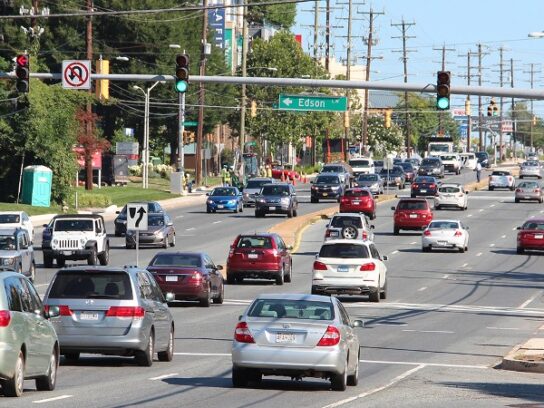
Montgomery Planning (MP) has released findings from their Predictive Safety Analysis, which collects data related to crashes on roadways in the county. From 2015-2019, there were 59,000 crashes in the county, with over 1,200 resulting in severe injuries and almost 150 in fatalities.
In an effort to combat the issue, MP created the Predictive Safety Analysis. The proposal uses mathematical models, known as Safety Performance Functions (SPFs), that predict the number of crashes on roadways and intersections using exposure—walking, bicycling, and driving in an area—and roadway characteristics. The board has uploaded an Interactive Crash Map to further highlight some of the trends.
There are a few steps outlined to bring solutions to the forefront:
Compile data —> Estimate volumes —> Identify key crash types —> Develop SPFs —> Identify high-risk locations —> Identify countermeasures
From the data, there are a few key findings:
- Analyzing crash history is counterproductive. MP expresses that implementing site-specific improvements after a fatal crash is ineffective because of the reliance on crash history. Crash history is “biased by the random nature of crashes,” meaning two intersections could have a difference in number of crashes yet the reasoning is the same. “Prioritizing safety treatments based solely on locations with a history of severe injury and fatal crashes could result in unaddressed crash risk,” as stated on their website.
- Suburbs contain a higher concentration of crash risk. The suburbs tend to have the highest concentration of crash risk due to the high-speed and high-volume boulevards. However, downtowns and town centers (i.e. Georgia Avenue in Downtown Silver Spring or Veirs Mill Road near Randolph Road) have the highest average crash risk. These centers would benefit the most from improvements.
- Equity Emphasis Areas (EEAs) are most impacted. Areas with a high concentration of low-income communities and/or racial and ethnic minorities should be prioritized because crash rates tend to be much higher. These communities are referred to as Equity Emphasis Areas (EEAs).
The Predictive Safety Analysis confirms the disparities in transportation safety in the county and pedestrians are most impacted. Low-income communities and communities of color have pedestrian crash rates over 200% higher than other parts of the county. https://t.co/9WdAw80OuO pic.twitter.com/DKZje4rsjI
— Montgomery Planning (@montgomeryplans) July 22, 2022
According to MP, this plan is the first step to implementing the systems that can best protect neighborhoods. The full pdf of MP’s Predictive Safety Analysis presentation can be accessed here.


Comments are closed.